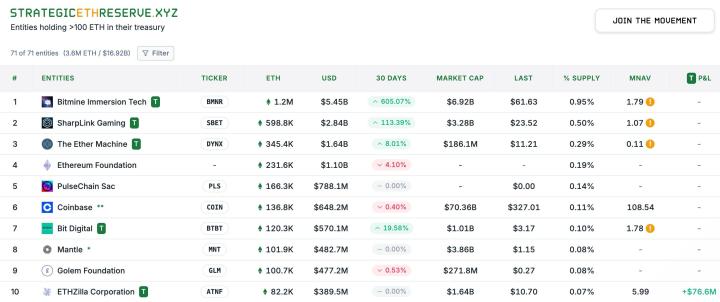Besides payment, stablecoins are quietly increasing the velocity of money: changing the usage frequency of each unit of capital, its flow direction, and the speed of stimulating economic activity.
Original:Stablecoins, Global Velocity, and the Internet of Capital
Author:Level
Translated by:AididiaoJP, Foresight News
[The rest of the translation continues in the same manner, maintaining the structure and translating the text to English while preserving technical terms and proper nouns.]2. On-Chain Finance and DeFi
The development of decentralized finance (DeFi) has further amplified the economic value of stablecoins. On platforms like Aave and Compound, stablecoin holders can participate in lending markets, transforming idle funds into productive capital. This improvement in capital utilization efficiency directly promotes faster money circulation. Platforms like Morpho Labs and Pendle allow users to use stablecoins for lending, yield products, or liquidity provision.
3. Remittance and Payment
APIs developed by stablecoin startups enable businesses to integrate stablecoin payments into existing cash flows, supporting 24/7 global instant settlement, reducing foreign exchange costs, and reaching markets traditional finance cannot cover.
Another example is cryptocurrency debit cards, which allow users to directly use on-chain stablecoin balances for daily consumption. By connecting with major payment networks like Visa and Mastercard, these cards instantly convert stablecoins to local currency at the point of purchase, without additional exchange. This bridge between on-chain and real-world environments makes stablecoins an active transaction medium for purchasing daily necessities, travel, and other everyday needs, thereby enhancing global money circulation speed.
4. Permissionless US Dollar Access
In countries like Turkey, Argentina, and Nigeria, stablecoins serve as an important financial tool, allowing users to store and freely trade US dollar value using only a mobile phone and internet connection. By reducing dependence on intermediaries and enabling instant, borderless payments, stablecoins more efficiently activate local capital and bring more participants into the economic system.
For small and medium-sized enterprises (whether in manufacturing, agriculture, digital services, or local retail), stablecoins enable direct connections between international buyers and suppliers, reducing cross-border trade friction, eliminating settlement delays, and protecting businesses from sudden local currency depreciation. Stablecoins enable individuals and businesses to maintain capital circulation in the local economy, which not only accelerates money circulation speed but also enhances economic resilience in high-volatility currency environments.
Stablecoin Practices in Southeast Asia
In developing markets like Thailand, Vietnam, and the Philippines, stablecoin adoption is accelerating through P2P and over-the-counter channels. For example, Siam Commercial Bank (SCB) in Thailand, through its innovation division SCB 10X, collaborates with Lightnet to enable cross-border payments and remittances using stablecoins on public blockchains. This is Thailand's first stablecoin-based settlement case, setting a benchmark for the regional financial industry. By integrating Fireblocks' custody infrastructure, the service ensures institutional-grade asset security and enhances mutual trust. In the future, SCB and Lightnet plan to expand services to corporate customers, enable bidirectional remittances, and provide the same efficiency and cost advantages to retail users.

Short-Term Impact: Economic Efficiency Improvement
In the short term, the improved money circulation speed driven by stablecoins brings significant economic benefits:
- GDP Growth: Faster circulation of the same capital pool promotes economic activity.
- Productivity Increase: Instant, low-friction payments and faster working capital cycles optimize business efficiency.
- Enhanced Financial Inclusion: Gig economy workers, creators, and merchants can trade using stable US dollar assets without relying on traditional banks.
This releases long-suppressed economic potential in emerging markets. Just as early internet accelerated business development by eliminating communication and distribution friction, stablecoins are doing the same for value transfer, enabling funds to move freely, 24/7, and almost cost-free.
Long-Term Impact: From Speed to Scale
Long-term effects are more complex.
As emerging market users gain access to US dollars and stablecoins, some capital is not used for consumption but saved or invested:
- Staked in DeFi for passive income.
- Used to purchase assets (real estate, tokens, stocks).
- Reserved for business expansion.
These actions remove funds from short-term trading cycles, reducing local circulation speed. But this is not a negative outcome. Similar to the early 21st century, it reflects a shift from speed-driven consumption to wealth accumulation and capital formation, a sign of economic maturity.
Even if monetary turnover frequency decreases, its usage efficiency is higher. In early growth stages, emerging economies tend to focus on consumption, infrastructure building, and catching up with developed economies. As income grows and financial instruments become more prevalent, savings rates gradually increase, and households begin accumulating wealth and investing in long-term assets. Stablecoins can accelerate this transformation.
Conclusion
Stablecoins are changing global fund flows, both increasing transaction speed and deepening financial inclusion. In the short term, they are boosters of circulation speed; in the long term, they are builders of capital formation.
Money circulation speed, a key indicator of economic vitality, is calculated as the ratio of GDP to money supply. The emergence of stablecoins injects new meaning into this traditional economic concept. Fully fiat-backed stablecoins that can be exchanged at any time have liquidity characteristics similar to M1 currency, but their operational efficiency far exceeds traditional fiat currencies.
It's important to note that circulation speed does not operate in isolation, and its economic impact depends on the following factors:
- Interest Rates: High interest rates encourage savings, reducing circulation speed.
- Inflation Expectations: If price increases are expected, people will accelerate consumption.
- Tariffs and Capital Controls: These can limit stablecoin use in specific regions.
- Fiscal Policy: Government transfer payments, taxes, and subsidies all affect money circulation.
Nevertheless, the result is the birth of a new type of global economic form: stablecoins that can move instantly, settle automatically, and remain robust in development. Just as early internet reshaped communication and commerce, stablecoins are doing the same to money itself. This transformation is not about printing more money, but about more efficiently utilizing existing resources.
Disclaimer: As a blockchain information platform, the articles published on this site represent only the personal views of the authors and guests, and are not related to Web3Caff's stance. The information in the articles is for reference only and does not constitute any investment advice or offer. Please comply with the relevant laws and regulations of your country or region.
Welcome to join the Web3Caff official community: X(Twitter) Account | Web3Caff Research X(Twitter) Account | WeChat Reader Group | WeChat Official Account







